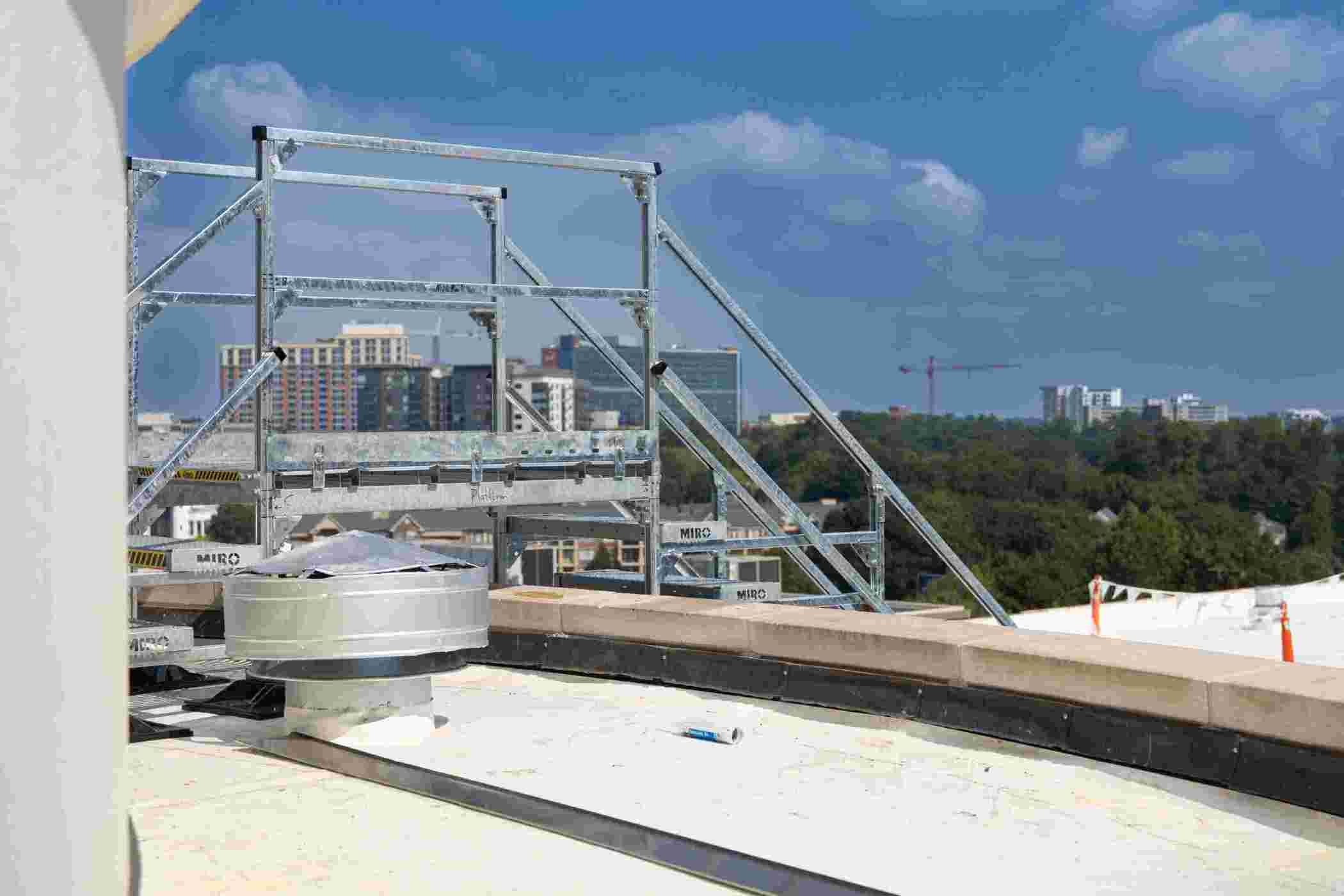Working at heights is one of the most common and most dangerous activities in construction, roofing, HVAC, and industrial maintenance. Falls remain a leading cause of workplace injuries and fatalities, making a well-designed Fall Protection Plan (FPP) not only a regulatory requirement but a critical part of workplace safety.
Whether your team works on rooftops, elevated platforms, or industrial structures, having a clear, documented plan reduces risk, improves compliance, and keeps workers safe.
In this guide, we’ll break down what every fall protection plan should include and how rooftop support solutions, such as walkway systems, guardrails, and equipment supports, strengthen overall safety.
Why a Fall Protection Plan Is Essential
A Fall Protection Plan outlines procedures, equipment, and safe-work practices designed to minimize the risk of falls. It helps:
- Identify site-specific fall hazards
- Establish protective measures
- Clarify worker responsibilities
- Support OSHA compliance
- Ensure workers are trained and prepared
- Provide rescue and emergency strategies
Without a structured plan, even basic tasks can become hazardous when performed at heights.
Key Components of an Effective Fall Protection Plan
1. Hazard Assessment
The first step is a thorough inspection of the work area. Identify risks such as:
- Unprotected edges
- Fragile or uneven surfaces
- Slippery areas
- Obstructed pathways
- Weather-related hazards
This assessment guides the safety measures required for the project.
2. Selection of Fall Protection Systems
Depending on the environment and task, fall protection systems may include:
- Guardrails
- Personal fall arrest systems (harness, lanyard, anchor point)
- Warning lines
- Safety nets
- Roof anchors
- Positioning devices
The selected system must be appropriate for both the environment and the work being performed.
3. Safe Access and Designated Walkways
Workers need clear, stable access across rooftops and elevated spaces. Rooftop walkway systems, crossover platforms, and bridges help:
- Prevent slips and missteps
- Protect roof membranes
- Direct workers away from hazardous edges
- Provide stable traction during movement
4. Worker Training and Competency
All personnel involved in the work must be trained on:
- Fall hazards specific to the site
- Proper use of fall protection equipment
- Inspection procedures
- Emergency response and rescue techniques
- Safe access and rooftop behavior
Training should be refreshed regularly and documented for compliance.
5. Rescue and Emergency Procedures
A fall protection plan must include a detailed rescue plan because suspended workers are at risk of suspension trauma. The plan should outline:
- Who performs the rescue
- What equipment is required
- Step-by-step rescue procedures
- Emergency contact information
Rescue drills should be conducted periodically.
6. Ongoing Monitoring & Inspections
Conditions on a rooftop or elevated platform change quickly. Continuous monitoring helps ensure:
- Equipment remains in safe, working condition
- Weather or structural modifications are addressed
- Walkways and access points remain clear
- Hazards aren’t introduced as work progresses
Documented inspections are essential for OSHA compliance.
How Rooftop Support Products Strengthen Fall Protection Plans
While fall protection equipment focuses on preventing falls, rooftop support solutions enhance overall safety by increasing stability and reducing hazards.
Rooftop Hangers and Pipe Supports
Rooftop hanger and roller pipe supports elevate pipes and conduit, preventing clutter and trip hazards while maintaining safe working paths.
Benefits include:
- Reduced rooftop obstruction
- Greater stability for critical systems
- Protection of roofing materials
Walkway and Crossover Systems
Walkway systems provide a non-slip surface for safe movement across the roof. Rooftop crossovers and stairs allow workers to safely cross pipes, conduits, or elevation changes.
Safety advantages:
- Clear pedestrian routes
- Less risk of slips, trips, and falls
- Controlled movement across the workspace
Guardrail Systems
Guardrails are one of the most effective forms of fall protection because they offer passive safety. Workers don’t need to wear or adjust anything.
Key features include:
- OSHA-compliant design
- Non-penetrating installation options
- High durability for long-term use
Equipment Supports
Mechanical unit supports for HVAC units, solar panels, and electrical equipment create safer rooftop conditions by preventing equipment movement, instability, or structural failures.
Integrating Rooftop Supports Into Your Fall Protection Plan
To maximize worker safety:
- Plan: Identify where guardrails, walkways, or supports reduce fall exposure.
- Improve navigation: Install walkway systems to guide workers safely across the roof.
- Protect equipment: Use supports to keep rooftop systems elevated and secure.
- Reduce hazards: Eliminate clutter, unstable surfaces, and exposed edges.
Conclusion
A strong fall protection plan is essential for any job involving elevated work. By incorporating hazard assessment, training, rescue planning, and the right safety systems, you create a safer and more compliant work environment. When combined with high-quality rooftop support solutions such as walkways, guardrails, and mechanical supports, your fall protection plan becomes even more effective.
Need expert guidance? MIRO can help! Get a Quote or book a Free Rooftop Design Consultation to discover the ideal support system for your project.


